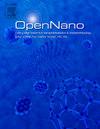Resveratrol loaded zein nanoparticles for inhibiting proliferation of osteosarcoma cells: Synthesis, characterization, release profile, and cytotoxicity
Q2 Pharmacology, Toxicology and Pharmaceutics
引用次数: 0
Abstract
Resveratrol loaded zein nanoparticles (Res ZNPs) were synthesized to deliver resveratrol to bone cells for inhibiting the proliferation of osteosarcoma cells. Zein chemically cross-linked with alendronate as a bone-targeting agent using EDC and NHS chemistry was also synthesized and the cross-linking was confirmed using Fourier-Transform Infrared and Nuclear Magnetic Resonance spectroscopy. Subsequently, Res ZNPs with and without alendronate were synthesized and characterized. The particles measured 273 to 294 nm with a narrow polydispersity index, and a zeta potential of -29 to -33 mV, respectively as evaluated by dynamic light scattering. The particles showed spherical morphology imaged by transmission electron microscopy and the entrapment efficiency and loading capacity were 63.0 % and 13.6 % for Res ZNPs and 69.1 % and 21.0 % for Res ZNPs with alendronate, respectively. Furthermore, the entrapped resveratrol of both systems was released in a three-phase manner under physiological condition (phosphate-buffered saline, PBS) at 37 °C over 24 h. Both systems exhibited suppression of osteosarcoma MG-63 cell proliferation and the inhibition rate was found slightly higher for targeted, Res ZNPs with alendronate. This research suggested that Res ZNPs conjugated with alendronate could be a candidate for effective bone-targeting delivery systems to inhibit the proliferation of osteosarcoma cells.
白藜芦醇载玉米蛋白纳米颗粒抑制骨肉瘤细胞增殖:合成、表征、释放谱和细胞毒性
合成了白藜芦醇载玉米蛋白纳米颗粒(Res ZNPs),将白藜芦醇输送到骨细胞中,抑制骨肉瘤细胞的增殖。用EDC和NHS化学方法合成了玉米蛋白与阿仑膦酸钠作为骨靶向剂的化学交联,并用傅里叶变换红外光谱和核磁共振光谱证实了这种交联。随后,合成和表征了含和不含阿仑膦酸钠的Res ZNPs。动态光散射结果表明,纳米粒子的多分散性指数为273 ~ 294 nm, zeta电位为-29 ~ -33 mV。经透射电镜观察,颗粒形貌呈球形,阿仑膦酸盐对Res ZNPs的包封效率为63.0%、13.6%,对Res ZNPs的包封率为69.1%、21.0%。此外,在生理条件下(磷酸盐缓冲盐水,PBS) 37°C下,两种体系的白藜芦醇在24小时内以三相方式释放。两种体系都表现出对MG-63骨肉瘤细胞增殖的抑制作用,并且发现阿仑膦酸钠对靶向Res ZNPs的抑制率略高。本研究提示,Res ZNPs结合阿仑膦酸盐可作为一种有效的骨靶向递送系统,用于抑制骨肉瘤细胞的增殖。
本文章由计算机程序翻译,如有差异,请以英文原文为准。
求助全文
约1分钟内获得全文
求助全文
来源期刊

OpenNano
Medicine-Pharmacology (medical)
CiteScore
4.10
自引率
0.00%
发文量
63
审稿时长
50 days
期刊介绍:
OpenNano is an internationally peer-reviewed and open access journal publishing high-quality review articles and original research papers on the burgeoning area of nanopharmaceutics and nanosized delivery systems for drugs, genes, and imaging agents. The Journal publishes basic, translational and clinical research as well as methodological papers and aims to bring together chemists, biochemists, cell biologists, material scientists, pharmaceutical scientists, pharmacologists, clinicians and all others working in this exciting and challenging area.
 求助内容:
求助内容: 应助结果提醒方式:
应助结果提醒方式:


